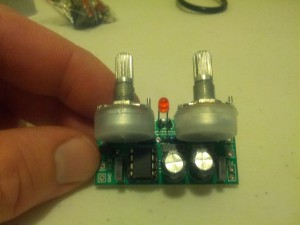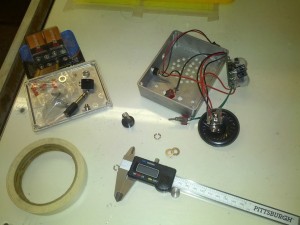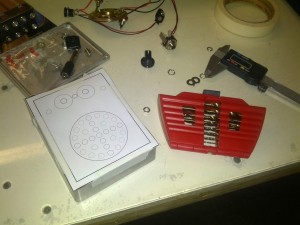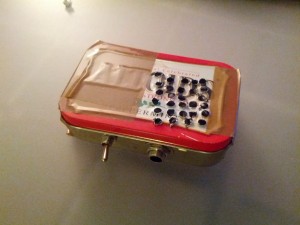
I built a small LM386 based guitar amp the other day. It sounds pretty neat. I built it into a 1590BB metal enclosure which is sometimes used for guitar effects pedals. I bought the PCB and parts from Tayda and just followed this page on Tayda Kits. These are fairly common amplifier chips and there’s tons of designs online and all sorts of cool enclosures have been used. Last year I built one in an Altoid tin.

It was a pretty easy circuit now that I have gotten a little better at soldering. I must say having the right stuff really helps. After working at the Dallas Makerspace a few times, I ended up buying my own soldering iron so I wouldn’t have to drive all the way out there just for that. They aren’t expensive, I got a nice Weller for $30. I have also got a helping hands and a magnifying glass lamp which help immensely. Unfortunately at the DMS, the helping hands seem to be in various stages of helping and often missing clips.

The difficult part was trouble shooting why the amp didn’t work at first. I ended up taking the board apart checking for shorts and ended up with pretty gnarly solder job from that. It turns out that there were actually two issues. First the amp chip died and was giving me a short which blew one of the capacitors. I finally figure out that it is the chip itself giving me a short, only to burn up another. After this I found that the 9v power adapter I was using had a reversed polarity from the assembly instructions. Oh well, that was a quick fix atleast, but I had spent a good bit of time to figure that out.
After the board finally tested out, it was up to the DMS to drill out the enclosure. When drilling something like this, it is best to create some sort of mask. I used to Inkscape to draw up a quick design. The allowed me to easily place the knobs on a straight and level line, and to drill a bunch of holes for the speaker in a pattern. It was still hand drilled, so I did get off a bit on the speaker grill, but it was tons better than without.

After drawing the design, I printed it out and checked to make sure the sizes were right. Then I just taped it down to the box with some tan masking tape. If you are interested the template is available for download, but I would move the center hole for the led down just a tad before using it.
It sounds pretty neat and has nice gain. The left switch is Power, knob is Volume, right knob is Gain, right switch is Bass Boost. I used a 1 Watt 8 Ohm speaker. At first I had a .5W speaker in, but it was buzzing some and definately overloaded so I tried the 1W and liked it more.

It sounds better and has much more options when compared to the super simple Altoid Amp I built last year. This one only had a power switch, and the gain was always set to max, but it sounded pretty neat.